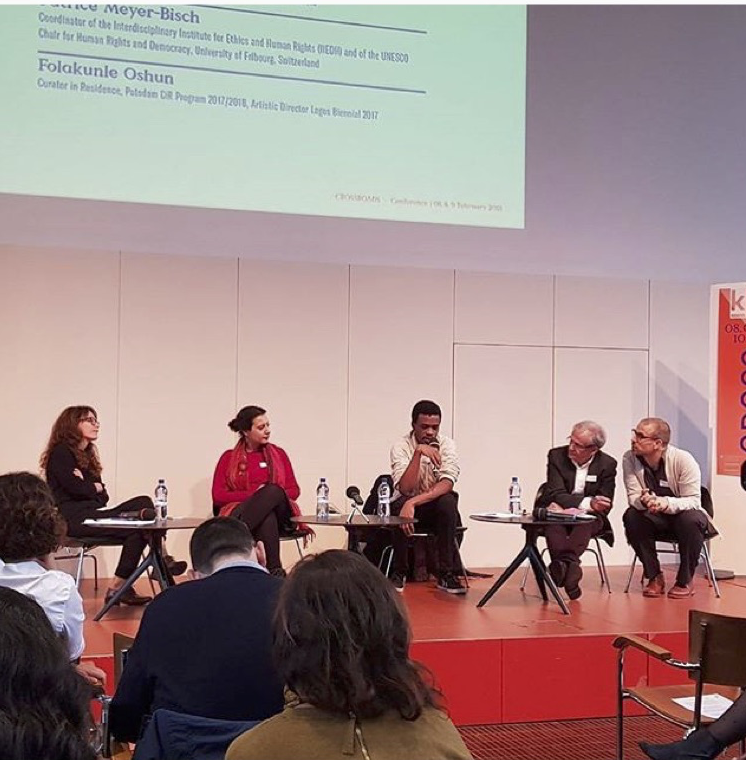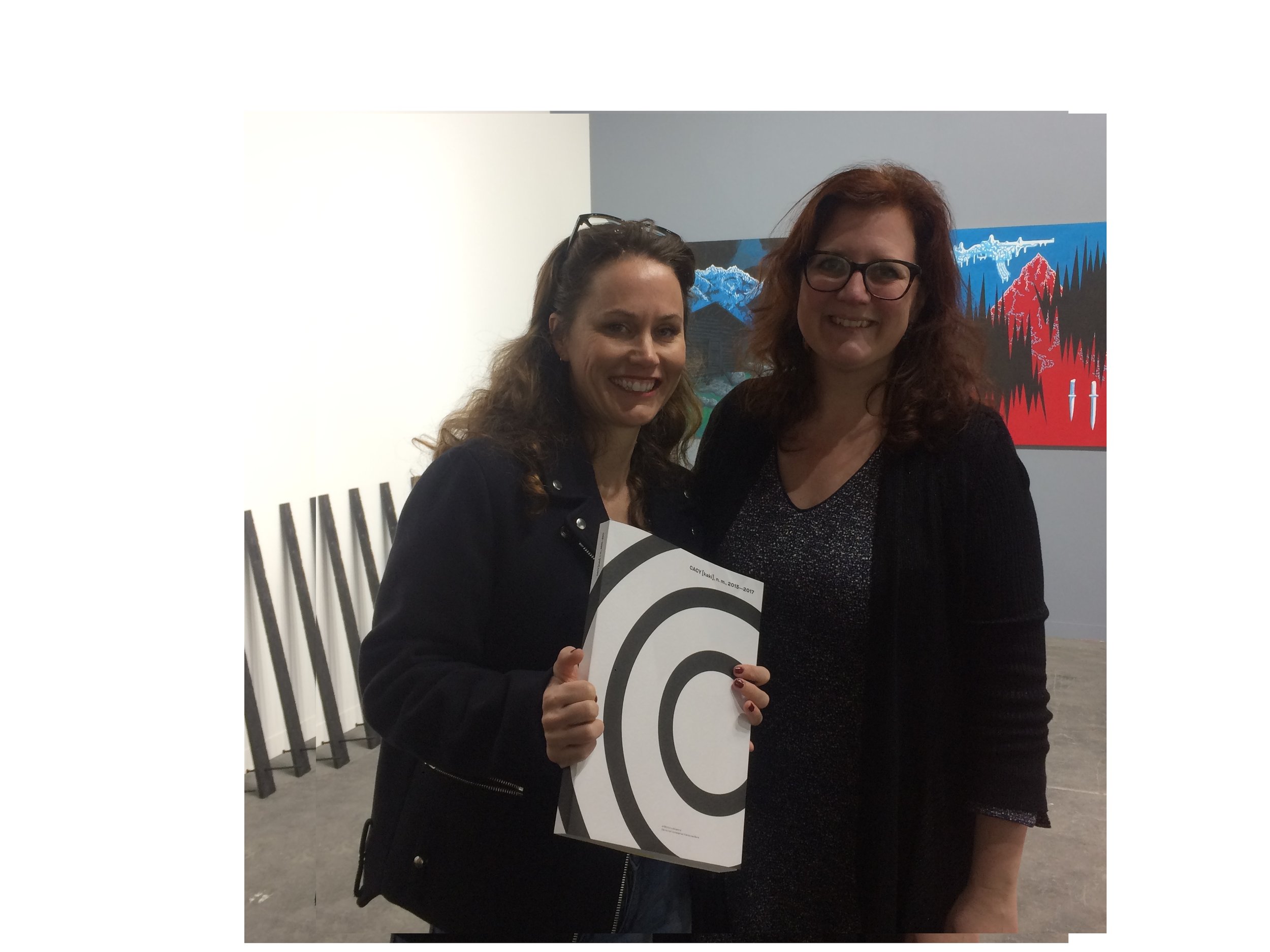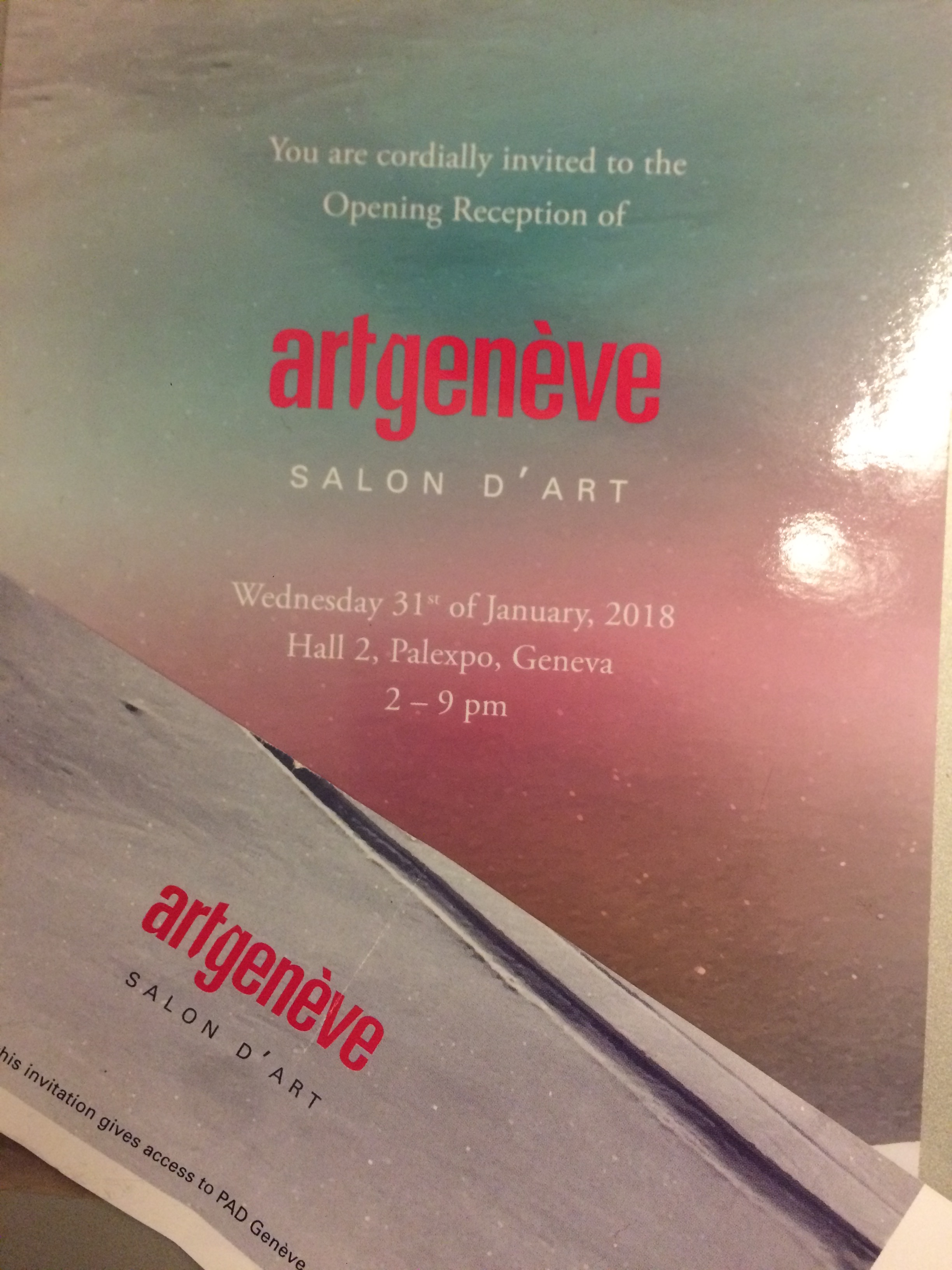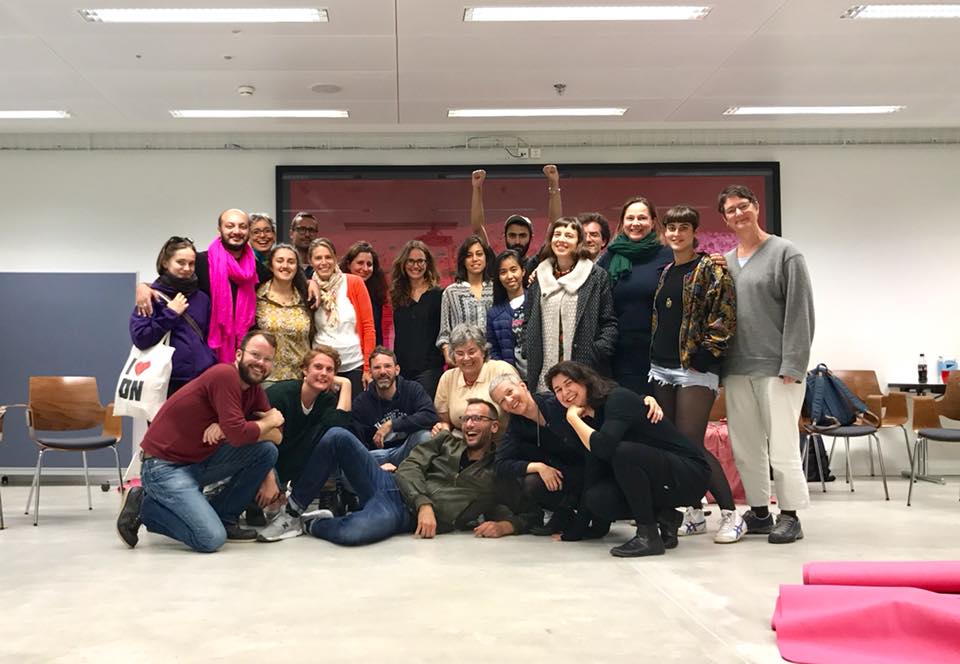What do a UNESCO Artist for Peace, a trauma specialist, and a seasoned peacebuilder have in common?
More than you'd think.
At the Caux Arts & Peace Encounters, I moderated a rich and resonant session on Arts & Healing, featuring:
✨ Guila Clara Kessous, UNESCO Artist for Peace
🧠 Prof. Barry Hart, Expert in psychosocial trauma and peacebuilding
🕊️ Regula Gattiker, Peacebuilder and mediator
We spoke of theatre as embodied testimony, music as a bridge to shared humanity, and movement to rebuild trust — not only in others, but in our own skin.
As Secretary of State Alexandre Fasel reminded us, artists and mediators share more than we think: they both navigate tension, listen between the lines, and work not toward quick fixes, but toward laying the foundations for lasting peace. They don’t just “solve” conflict; they reframe it with imagination, empathy, and nuance.
To all those who believe the arts and culture are a luxury in times of crisis: think again.
They are the architecture of empathy.
Joining “10% for the ocean” as member of their Advisory Committee
“If we don’t change how we fund ocean recovery, we risk losing the very system that sustains life on Earth.
What if just 10% of all charitable giving went to ocean conservation? That would unlock $80 billion annually—enough to end overfishing, restore vital ecosystems, and protect 30% of the ocean by 2030.
10% for the Ocean aims to build the world’s largest philanthropy fund for ocean recovery. Like a mutual fund for the sea, we pool donations from individuals, businesses, and foundations to fund the most impactful conservation, research, and restoration initiatives worldwide.” Join the movement
Burkina Faso is calling again !
Working on a new assignment that will bring me back to Ouagadougou, taking stock with the wonderful CITO, Cartel, Fonds succès cinéma, Institut Imagine, and many more… Cinema and theatre at their best! Stay tuned…
South Caucasus - The Power of Images
Images speak a thousand words - everywhere and for everyone, including in the remotest valleys of our world. With this in mind, the Swiss embassies in the South Caucasus partnered with the South Caucasus Photography Hub for Education and Innovation (PHEI) and the Documentary Film Festival (CinéDOC). Together and working with artists, children, local communities and civil society agents, they are engaging civil society, building up professional capacities and building bridges across the three countries of Azerbaijan, Armenia and Georgia. I had the great pleasure of being invited back by the Swiss Embassy in Tbilisi to provide advice and capacity building to this innovative Project.
South Caucasus Moving Museum of Photography © Justyna Mielnikiewicz
Impromptus lecture at the Zurich University of the Arts
Working with arts in fragile contexts offers potential and limitations - as explored by the ZHdK’s Certificate of Advanced Studies in Arts and International Cooperation. What constitutes “cultural value”? In what way is it relevant to human development? Which methodologies may help demonstrate such value? These are some of the exciting questions that this CAS seeks to address.
It’s always a pleasure to lecture at the ZHdK - and a priviledge to get inspired by the sparkling creativity of its students!
pc ZHdK
Review of the Sustainable Mountain Art Programme
A wonderful artist-in-residence programme that I encourage you to discover: when arts becomes the vehicle for exchange, dialogue and collaboration around issues affecting our mountains and their people. I had the great pleasure to accompany a review process and exchange with some of the inspiring personalities and artists at the heart of this imitative: Juan Arias in Colombia, Maralagua Badarch in Mongolia, IbrahimDar Al Mussawir in Lebanon, Mariano Price in Peru, Sarah Huber and Eric Nanchen in Switzerland among others. More on: http://sustainablemountainart.ch/
"Etats Généraux de la Culture" in Tiznit, Morocco
I was thrilled to be invited as a panelist to the annual conference on culture organized by a coalition of cultural actors in Morocco, under the leadership of the association “Racines”. We talked about cultural de-centralisation, citizen participation and examples of processes that truly strengthen each and everyone’s access and right to actively participate in culture.
Tadjik chronicles
The magazine “Bon Pour La Tête” is publishing my poetic chronicles… Visit www.bonpourlatete.com (photos © Céline Yvon and Muattarkhon Bashirova)
Artistic practices opening up spaces for dialogue
Participating in the Steering Committee of SDC's Cultural Programme in Central Asia is always rich in learning and inspiration. Key take-aways, this time, included:
#1: People make all the difference. Without strong and committed personalities, even the most robust, well-sourced result-oriented programming will fail to deliver system change. We need women and men to set the tone of the music. We need women and men to take bold approaches and inspire others. And in this regard, I did love the discussions that took place in this year's Steering Committee. Trusting the potential that artistic practices have in terms of strengthening civil society has become mainstream - at last.
#2: We need to talk about the Millenials of Central Asia. They every day navigate a complex context avoiding the pitfalls of black/white analysis, trying to make the best of the existing - democratic, economic, geographic - space. Laboratoria ci and their likes work across disciplines - arts? sociology? education? - towards promoting conscious, reflective and responsible citizenship in the region. Topics that matter to their hearts include gender and feminism, public spaces, the post-modern city... and of course, how to reach out to and empower the youth of Bishkek.
The team of Laboratoria ci
"Cultural rights under pressure", International perspectives on culture, art and society
The conference "Crossroads" brought together more than a hundred professionals from the field of contemporary arts, worldwide. Organized by ProHelvetia and SDC, it aimed at celebrating international artistic collaborations and at taking stock of challenges and best practices.
I moderated the panel entitled: "Cultural rights under pressure – a contemporary arts perspective". The discussion brought together Ms Jumana Al-Yasiri, a Damascus-born, Palestinian Iraqi performing arts specialist, now with the Sundance Institute in New York; M. Folakunle Oshun, an artist and curator from Nigeria who founded the first Lagos Biennale; and Professor Patrice Meyer-Bisch, who tirelessly advocated in favor of cultural rights to be considered as central to human development processes.
The panel unpacked the central assumption according to which cultural rights are central to the development of our open and democratic societies. We heard about current concerns, restrictions and attacks on those cultural rights – but also, about inspiring stories on how artists and artistic engagements contributed to uphold these rights. We talked about artists being both necessary ingredients of open and democratic societies and facilitator/accelerators of the cultural rights of others. We concluded that talking about cultural rights was inseparable from talking about human development in the sense put forward by Nobel price winner Amartya Sen: Poverty is fundamentally about the lack of rights and opportunities to develop one’s full potential and capabilities. If so, what better vehicles than literature, visual arts, music and theatre to help us think, dream. engage, imagine, argue, cry and lough -- and in doing so, be fully... humane.
A little essay in a big book...
Proud and thankful for the opportunity to have my essay feature in the jubilee publication of the Centre for Contemporary Art of Yverdon (curator: Karine Tissot) launched at ArtGeneva.
New publication
My contribution to last year's conference on cultural heritage in times of crisis has been published, finally... (Editor: Peter Schneider)
Lecturing at the Zurich University of the Arts
Lecturing on Arts, International Development and Peacebuilding at ZHdK's new Certificate of Advanced Studies on Arts and International Cooperation - inspired by this group of talented students from different countries and backgrounds - ladies and gentlemen, you rock !
In China....
... and enjoying it so much! More to come here soon, with the story of the man who wants to capture memories of his fellow citizens - stay tuned...
A Central Asian Postcard
I'm just back from Tajikistan, a country that is very close to my heart: located at the crossroad of several civilisations and influences - from the Zoroastrians to the Greco-Bactrians, the Mongols, Samanids and the Russians, this little piece of our earth is a concentrate of history, diversity and inspiration.
Together with my friends and colleagues from the Central Asian Arts and Culture Programme, we worked with several local theaters and festivals, exploring ways to build their capacities so that they can continue to grow as thoughts-provoking civil society organisations. One of them is the Kanibadan Theatre, home to an incredibly talented, inspired and versatile team. Muhiddin, Ghayrat and their associates are bursting with ideas, planning to transform their little town in Northern Tadjikistan along the line of "a theatre in town and a town in the theatre". Kids and youth of Kanibadan: get ready for the journey !
MUHIDDINI MUZAFFAR (Photo credit farhodactor tajikistan)
Back to Mozambique: What is the role of arts and culture in a country in transition?
Mozambique is currently at a crossroad - politically, economically and security-wise - and its artists are not the least engaged in the journey coming ahead. While Mozambique has always been a source of mesmerizing experiences for me - travelling to and working time and again in Maputo, Pempa, Lichinga or La Isla has been incomparably inspiring - this time I had a particularly thrilling task to engage on: supporting the Swiss Embassy in reviewing its four-year programme supporting the arts and the culture of Mozambique.
We explored in what way building a pluralistic, inclusive and vibrant cultural sector may reinforce democratisation processes and the building of an engaged and organised civil society. We also discussed how concretely, creative forms of expression - theatre, poetry, music and dance - could become effective levers for democratisation and peace-building processes. Looking forward, I outlinled several options for a future continuation of the Programme, and will now follow-up with a local expert on framing the journey ahead… So: stay tuned -- more on that in the next few months...
Meanwhile, let me pick this initiative out of so many, and encourage you to support A Mundzuku Ka Hina. For cultural emergency is no less a priority than that of health and food - and the power of words, images and sounds, relevant to any human being. Get inspired by the work of Fabiao or Adilio, children of the Maputo's slums and landfills, and visit www.amundzukukahina.org
All photos ©A Mundzuku Ka Hina
Cultural Heritage, Wars and Post-Conflict Recovery
I was invited to give a talk at the conference "Catastrophe and Challenge: Cultural Heritage in Post-conflict Recovery" (http://heritage-post-conflict.com). My presentation focused on the topic of "Ethics and Cultural First Aid" and will be followed by a publication (upcoming). Talking about Cultural Heritage work taking place in contexts plagued by violent conflict such as in Iraq or in Yemen for example. I argued that:
- the conditions in which Cultural Heritage work unfolds is such extreme that it makes moral questions much more acute than during peace-time; in particular, it is impossible to escape political questions;
- some of these moral issues are similar to those that may routinely occur in Humanitarian Aid, while others are specific to the field of Cultural Heritage - and I briefly browsed through 6 of these issues;
- such moral challenges require the field of Cultural Heritage to (re-)think its rationale and moral compass carefully through; and I made some propositions in this regard;
- and I ended with recommending the field to adopt an ethics of "intellectual debate" as opposed to getting bogged down into drafting technical guidelines.
My reading at the Lausanne Theatre L'Arsenic
Proudly reading extracts from my short story Toeegge...
Culture Cannot Wait!
In June 2016 I participated in a joint ICCROM and Smithsonian workshop on ”First Aid to Cultural Heritage in Times of Crisis” (FAC). Stacy Bowe: “The core objective of FAC is to expand the capacity for disaster response among cultural heritage professionals, yet becoming one of these “cultural first-aiders” does not mean simply improving one’s practical skills in object salvage and handling. The course’s philosophy drives at the principle that being a cultural first-aider requires a humanitarian mind-set of cultural respect and impartiality - they must make sure their actions align by these humanitarian principles of neutrality and sensitivity.”
Article excerpt
Posted on July 29, 2016 on http://conflictculture.info
A Review of FAC 2016: Culture Cannot Wait!
By Stacy Bowe, Project Manager, First Aid to Cultural Heritage in Times of Crisis 2016
Members of this research network study the causes of targeted cultural heritage destruction, but one of the questions that often arises from this difficult discussion concerns the aftermath: Is it possible to protect cultural heritage in the event of a disaster? If yes, then when is the appropriate time to intervene, and who can contribute? Seeking answers to these types of questions is the premise of ICCROM’s international training called First Aid to Cultural Heritage in Times of Crisis (FAC). This course has been part of ICCROM’s Disaster Risk Management program for over a decade, but the recent iterations of this training are due to a partnership with the Smithsonian, along with the Prince Claus Fund, and the Netherlands National Commission for UNESCO (who hosted a FAC course last year in Amsterdam). The most recent hosting of FAC took place at the Smithsonian Institution in Washington D.C., from June 2-29, 2016.[...]
Syria: and yet there is art
The City of Light lives up to its name – Paris is currently hosting two radiant exhibitions of Syrian contemporary arts: Et pourtant, ils créent, at the Institut des Cultures de d’Islam; and Cris-action, Artistes en création, at the Institut du Monde Arabe. Both are powerful testimonies of art as a vehicle of sense despite, against and inside violence.
With the war in Syria came also the implosion of its artistic scene – while some artists fled abroad at the very beginning of “the revolution”, others tried to stay in country. Three years later, many Syrian artists now live in Damas, Beyrouth, Dubai or Paris. Some celebrate life by refusing to give a place to the violence that surrounds them; others choose to tell all about the war, documenting it in a way that makes all denial impossible; almost all use irony and poetry, surprising us beyond the ongoing tragedy. The artist Tammam Azzam for example affixes Klimt’s Kiss to a bullet-destroyed building; in doing so, he juxtaposes the best and the worst human beings are capable of.
“Kiss”, by Tamman azzam
Many artists are engaged politically and socially speaking. They try to organise and give a collective voice to the people – that is, to the same very people that political forces try to divide and render speechless. Internet and blogs in particular have become powerful platforms for social exchanges, participation and diffusion, all the more in a context where obviously, there are hardly any physical spaces to create and exhibit anymore. No is a collective of artists and activists working through a Facebook page. They use it as a platform for Syrian people to express their opposition to humiliation, despair and vengeance. One of their work streams showed people using their own body to form the word “no” in Arabic, echoing the monumental electoral banners that displayed “yes” (to Bachar All Assad) in the run-up of the elections.
La Voix des Invisibles is an interactive and sonor installation by Samuel Aoun. He wanted to give a voice to the invisible human elements of this terrible war, to the marginalised members of the “civil society” about whom one talks but never listens to. A phone rings, the billboard urges you to pick it up, and so you do. On the line, someone telling you what his/her every day life in the conflict is. And you listen.
La Voix des Invisibles, by Samuel Aoun
The incredible creativity of Syrian artists make us wonder about what it takes to be an artist in a country in conflict, about what it means to create surrounded by chaos and destruction, and about what such violence does to creative practices.
In today’s Syria, creation is perhaps the most powerful act that can be. Creation against destruction, life against death, hope against despair. These artists elevate us beyond the disaster, tragedy, and inhumanity.
See full article here on “Culture Matters”
Background information: Jamel Oubechou and Elsa Jacquemin























